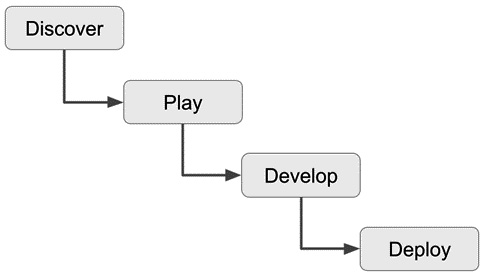Setting up our tools
To prepare for the work in the rest of this chapter, and indeed the rest of the book, it will be helpful to set up some tools. At a high level, we need the following:
- Somewhere to code
- Something to track our code changes
- Something to help manage our tasks
- Somewhere to provision infrastructure and deploy our solution
Let's look at how to approach each of these in turn:
Somewhere to code: First, although the weapon of choice for coding by data scientists is of course Jupyter Notebook (other solutions are available), once you begin to make the move toward ML engineering, it will be important to have an Integrated Development Environment (IDE) to hand. An IDE is basically an application that comes with a series of built-in tools and capabilities to help you to develop the best software that you can. PyCharm is an excellent example for Python developers and comes with a wide variety of plugins, add-ons, and integrations useful to the ML engineer. You can download...



